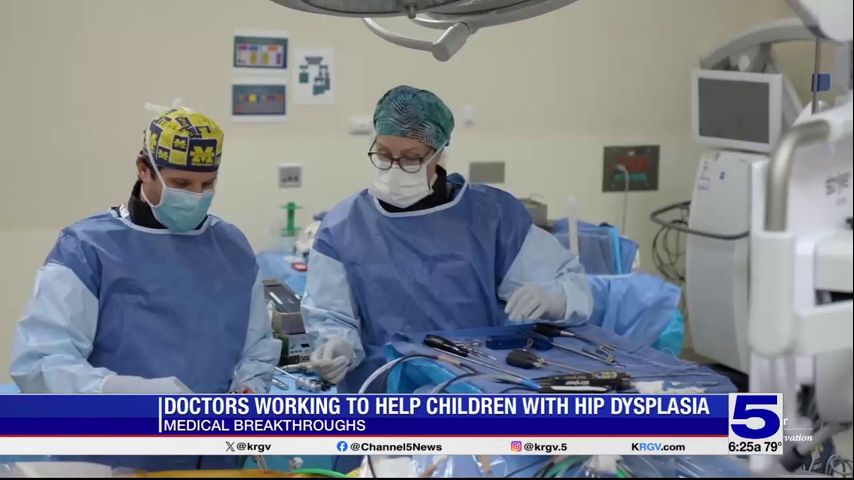Medical Breakthroughs: Doctors working to help children with hip dysplasia
Hip pain is usually associated with middle-aged or elderly people, but children can also have bad hips.
There's a certain condition that impacts hundreds of U.S. children every year.
Shea Stone is at the top of her game. Perfecting her shots since sixth grade and now her dream of playing lacrosse for the University of Oregon is coming true.
But Stone was almost sidelined when her hip started hurting.
"It was a deep stabbing pain, like in the groin area of my hip, and I could barely put weight on it," Stone said.
Stone was diagnosed with Hip Dysplasia, which happens when the hip socket doesn't fully cover the top of the thighbone.
"You have too shallow of a socket where the hip is not as rock solid, stable as it should be," Hip Preservation Specialist Mike Ellman said.
Stone also suffered from a labral tear where the cartilage is pulled away from the bone, but hip preservation specialists were able to combine two procedures into one.
First, arthroscopic surgery addresses soft tissue damage.
This minimally invasive technique allows for repair of the labrum and removal of bone spurs causing impingement.
"We go in, and we take care of all the stuff from a soft tissue standpoint in the joints," Ellman said.
Then, surgeons tackle the misshapen hip socket by cutting and repositioning the hip socket to improve its fit with the thighbone.
"80 to 90 percent of these patients never get another surgery," Ellman said.
As for Stone, recovery took six months, and now she is back out on the playing field, a true force to be reckoned with.
Hip Dysplasia is more common in females; firstborns also have a higher risk.
Doctors at the Sky Ridge International Center for Hip Preservation have launched the International Hip Preservation Program.
They are bringing together hip specialists from around the world to collaborate on new research and treatment innovations to help improve the lives of patients dealing with chronic hip pain and problems.





